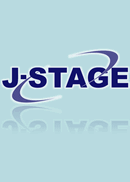3 巻
選択された号の論文の18件中1~18を表示しています
- |<
- <
- 1
- >
- >|
-
1975 年 3 巻 p. 1-3
発行日: 1975/06/06
公開日: 2012/10/29
PDF形式でダウンロード (421K) -
1975 年 3 巻 p. 4-17
発行日: 1975/06/06
公開日: 2012/10/29
PDF形式でダウンロード (2031K) -
1975 年 3 巻 p. 18-28
発行日: 1975/06/06
公開日: 2012/10/29
PDF形式でダウンロード (2688K) -
1975 年 3 巻 p. 29-41
発行日: 1975/06/06
公開日: 2012/10/29
PDF形式でダウンロード (1845K) -
1975 年 3 巻 p. 42-55
発行日: 1975/06/06
公開日: 2012/10/29
PDF形式でダウンロード (2377K) -
1975 年 3 巻 p. 56-60
発行日: 1975/06/06
公開日: 2012/10/29
PDF形式でダウンロード (3084K) -
1975 年 3 巻 p. 61-68
発行日: 1975/06/06
公開日: 2012/10/29
PDF形式でダウンロード (1013K) -
1975 年 3 巻 p. 69-73
発行日: 1975/06/06
公開日: 2012/10/29
PDF形式でダウンロード (583K) -
1975 年 3 巻 p. 74-79
発行日: 1975/06/06
公開日: 2012/10/29
PDF形式でダウンロード (852K) -
1975 年 3 巻 p. 80-82
発行日: 1975/06/06
公開日: 2012/10/29
PDF形式でダウンロード (419K) -
1975 年 3 巻 p. 83-89
発行日: 1975/06/06
公開日: 2012/10/29
PDF形式でダウンロード (903K) -
1975 年 3 巻 p. 90-93
発行日: 1975/06/06
公開日: 2012/10/29
PDF形式でダウンロード (1065K) -
1975 年 3 巻 p. 94-96
発行日: 1975/06/06
公開日: 2012/10/29
PDF形式でダウンロード (476K) -
1975 年 3 巻 p. 97-101
発行日: 1975/06/06
公開日: 2012/10/29
PDF形式でダウンロード (753K) -
1975 年 3 巻 p. 102-106
発行日: 1975/06/06
公開日: 2012/10/29
PDF形式でダウンロード (2000K) -
1975 年 3 巻 p. 107-112
発行日: 1975/06/06
公開日: 2012/10/29
PDF形式でダウンロード (796K) -
1975 年 3 巻 p. 113-118
発行日: 1975/06/06
公開日: 2012/10/29
PDF形式でダウンロード (3452K) -
1975 年 3 巻 p. 119-124
発行日: 1975/06/06
公開日: 2012/10/29
PDF形式でダウンロード (1016K)
- |<
- <
- 1
- >
- >|
